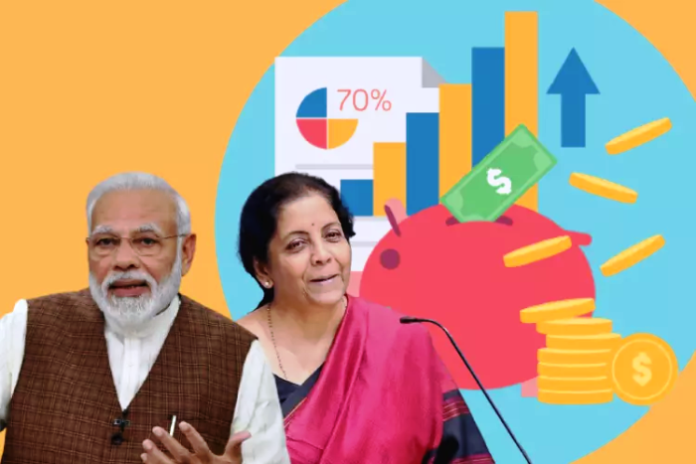Mr. Surendra Hiranandani, Chairman and Managing Director, House of Hiranandani
 The Union Budget 2023 placed a premium on inclusive development, infrastructural development, green growth, and youth empowerment. The personal tax rebate move is a major milestone by the government that aims to encourage more youthful homeowners to invest in real estate. The government’s commitment on green development is commendable, especially given its emphasis on urban and green infrastructure. With that said, we predict that the following years will be dominated by urban and green initiatives across the country. We wish to acknowledge the government for funding PMAY with 79,000 crore to support the real estate industry’s goal of “Housing for All.” Furthermore, being one of the most significant sectors in terms of the country’s economy, the industry anticipated for some additional investment and focus on the deployment across the commercial and residential sectors, as well as a focus on luxury with affordability.
The Union Budget 2023 placed a premium on inclusive development, infrastructural development, green growth, and youth empowerment. The personal tax rebate move is a major milestone by the government that aims to encourage more youthful homeowners to invest in real estate. The government’s commitment on green development is commendable, especially given its emphasis on urban and green infrastructure. With that said, we predict that the following years will be dominated by urban and green initiatives across the country. We wish to acknowledge the government for funding PMAY with 79,000 crore to support the real estate industry’s goal of “Housing for All.” Furthermore, being one of the most significant sectors in terms of the country’s economy, the industry anticipated for some additional investment and focus on the deployment across the commercial and residential sectors, as well as a focus on luxury with affordability.
Dr. Niranjan Hiranandani, Vice Chairman, NAREDCO on Budget 2023.
 Terming it as a fiscally ‘balanced’ budget, NAREDCO Vice Chairman Dr. Niranjan Hiranandani rates it at 8/10. India has prudently maneuvered global and economical storms. It has aptly addressed the economic growth of India by augmenting the capital expenditure outlays in infrastructure upto Rs 10lac crores accounting to nearly 3.3% of GDP. This will have a multiplier effect on real estate asset classes like the residential, commercial, Industrial and Logistics sector. The last mile connectivity will reduce the logistics cost substantially, enhancing India’s global competitiveness and investment index. Infrastructure development is pivotal for employment generation and opens up hinterlands across geographies for all sorts of real estate developments. Setting up of Urban Infrastructure Development Fund managed by NHB will ensure governance, speed in execution and timely delivery under PPP ties. Incremental PMAY allocation upto Rs 79,000crores will give impetus to affordable housing and benefit a wide segment of homebuyers. Rebates in personal tax will permit additional disposable income in the hands of the discerning homebuyers to be invested back in a safe asset ‘home’. The capital gain tax benefit on the sale of property above the value of Rs 10crores is sought to be withdrawn. families are liable to pay capital gain tax which will disincentivize families to buy multiple properties as a security provision for their children. Emphasis on skilling to foster research and knowledge-based economy will garner a job ready workforce for the highly labor-intensive real estate sector. The measures for digital adoption and green economy will augur well for sustainable development and help achieve a low carbon economy.
Terming it as a fiscally ‘balanced’ budget, NAREDCO Vice Chairman Dr. Niranjan Hiranandani rates it at 8/10. India has prudently maneuvered global and economical storms. It has aptly addressed the economic growth of India by augmenting the capital expenditure outlays in infrastructure upto Rs 10lac crores accounting to nearly 3.3% of GDP. This will have a multiplier effect on real estate asset classes like the residential, commercial, Industrial and Logistics sector. The last mile connectivity will reduce the logistics cost substantially, enhancing India’s global competitiveness and investment index. Infrastructure development is pivotal for employment generation and opens up hinterlands across geographies for all sorts of real estate developments. Setting up of Urban Infrastructure Development Fund managed by NHB will ensure governance, speed in execution and timely delivery under PPP ties. Incremental PMAY allocation upto Rs 79,000crores will give impetus to affordable housing and benefit a wide segment of homebuyers. Rebates in personal tax will permit additional disposable income in the hands of the discerning homebuyers to be invested back in a safe asset ‘home’. The capital gain tax benefit on the sale of property above the value of Rs 10crores is sought to be withdrawn. families are liable to pay capital gain tax which will disincentivize families to buy multiple properties as a security provision for their children. Emphasis on skilling to foster research and knowledge-based economy will garner a job ready workforce for the highly labor-intensive real estate sector. The measures for digital adoption and green economy will augur well for sustainable development and help achieve a low carbon economy.
Sudheer Perla, Country Head, Tabreed India
 With India’s G20 presidency as a backdrop, this year’s budget has listed “Green Growth” as one of the seven priority areas. With a budgetary allocation of INR 35,000 cr for transition to a low-carbon intensity, green and secure economy, 2023 may be a turning point for the country. India is moving swiftly to achieve its Net Zero targets by 2070, implementing a multi-pronged approach focussed on supply and demand side measures including introduction of more and more renewables and hydrogen in the energy mix, focus on energy efficiency as well as behavioural aspects through programs like LiFE and Green Credit Programme, waste to wealth plans to promote circular economy, etc.
With India’s G20 presidency as a backdrop, this year’s budget has listed “Green Growth” as one of the seven priority areas. With a budgetary allocation of INR 35,000 cr for transition to a low-carbon intensity, green and secure economy, 2023 may be a turning point for the country. India is moving swiftly to achieve its Net Zero targets by 2070, implementing a multi-pronged approach focussed on supply and demand side measures including introduction of more and more renewables and hydrogen in the energy mix, focus on energy efficiency as well as behavioural aspects through programs like LiFE and Green Credit Programme, waste to wealth plans to promote circular economy, etc.
Given this context, Tabreed firmly believes that through implementation of a sustainable and holistic cooling solutions such as district cooling across vital sectors like real estate, cold chain and refrigeration in the agriculture and pharmaceuticals sector, air-conditioning in passenger transport and data centres along with government initiatives like urban planning and smart cities will expediate India’s energy transition efforts in the long term, helping sustained green inclusive economic growth. The Budget has indeed paved a path for India’s journey towards becoming a Bright ‘Green’ North Star!
Mr. Sudhir Pai, CEO Magicbricks
 The Union Budget 2023 is a bonanza for affordable housing, with the strategic decision to increase outlay for Pradhan Mantri Awas Yojana (PMAY) by 66%! This decision provides the much-needed impetus towards the vision of “Housing for all”. Further, with a 33% increment in infrastructure outlay, the Government is facilitating economic growth through job creation and investments which have direct and indirect impact on the real-estate sector. It is also heartening to see that the government is maintaining its focus on furthering urbanization initiatives, especially with the outlay of INR 10,000 crores per annum for an Urban Infrastructure Development Fund (UIDF) for tier 2 and tier 3 cities. This would certainly give the required boost to the real-estate markets in these cities, which have emerged as real estate growth engines in the past few years. 2022 saw a year-on-year increase in residential demand in cities like Bhubaneswar (12%), Coimbatore (27%), Jaipur (5%), and Nagpur (66%), amongst others, and this initiative will further elevate the livability index and appeal of these cities. Overall, the Union Budget is definitely positive and growth oriented for the real-estate sector.
The Union Budget 2023 is a bonanza for affordable housing, with the strategic decision to increase outlay for Pradhan Mantri Awas Yojana (PMAY) by 66%! This decision provides the much-needed impetus towards the vision of “Housing for all”. Further, with a 33% increment in infrastructure outlay, the Government is facilitating economic growth through job creation and investments which have direct and indirect impact on the real-estate sector. It is also heartening to see that the government is maintaining its focus on furthering urbanization initiatives, especially with the outlay of INR 10,000 crores per annum for an Urban Infrastructure Development Fund (UIDF) for tier 2 and tier 3 cities. This would certainly give the required boost to the real-estate markets in these cities, which have emerged as real estate growth engines in the past few years. 2022 saw a year-on-year increase in residential demand in cities like Bhubaneswar (12%), Coimbatore (27%), Jaipur (5%), and Nagpur (66%), amongst others, and this initiative will further elevate the livability index and appeal of these cities. Overall, the Union Budget is definitely positive and growth oriented for the real-estate sector.
Mr. Rajan Bandelkar, President, NAREDCO
 This is yet another growth-oriented budget with major focus on relief to middle class and infrastructure development. The record capital expenditure of Rs 10 lakh crore will have helped growth, employment and demand enhancement across sectors. Infrastructure is the pivot of India’s economic growth and real estate is among the most important constituents of this infrastructure basket. Government’s decision to increase the allocation to the flagship Pradhan Mantri Awas Yojana (PMAY) by 66% to a record level of Rs 79,000 crore will give a much needed boost to demand in the affordable housing segment. The focus on infrastructure and the decision to set up an Urban Infrastructure Development Fund would also accelerate the housing sector in tier 2 and tier 3 cities. The relaxation on the taxation front for the middle class and the tax exemption up to the annual income of Rs 7 lakh and other incentives would put in more money in the hands of the common man, thereby allowing them more scope to realize their dreams of having their own homes. The sector, however would require relief in taxation in terms of housing and boost is required for boosting purchase of more of one property, which would go a long way in achieving the goal of “Housing For All”. It is expected that the government will take up further demand boosting measures going ahead in line with its focus on growth.
This is yet another growth-oriented budget with major focus on relief to middle class and infrastructure development. The record capital expenditure of Rs 10 lakh crore will have helped growth, employment and demand enhancement across sectors. Infrastructure is the pivot of India’s economic growth and real estate is among the most important constituents of this infrastructure basket. Government’s decision to increase the allocation to the flagship Pradhan Mantri Awas Yojana (PMAY) by 66% to a record level of Rs 79,000 crore will give a much needed boost to demand in the affordable housing segment. The focus on infrastructure and the decision to set up an Urban Infrastructure Development Fund would also accelerate the housing sector in tier 2 and tier 3 cities. The relaxation on the taxation front for the middle class and the tax exemption up to the annual income of Rs 7 lakh and other incentives would put in more money in the hands of the common man, thereby allowing them more scope to realize their dreams of having their own homes. The sector, however would require relief in taxation in terms of housing and boost is required for boosting purchase of more of one property, which would go a long way in achieving the goal of “Housing For All”. It is expected that the government will take up further demand boosting measures going ahead in line with its focus on growth.
Mr. Rohan Pawar, CEO, Pinnacle Group
 The ‘AMRITKAL – Sabka Saath Sabka Vikas’ Union budget is optimistic and focuses on growth and development. The previous budget allocated Rs 48,000 crore for the completion of 80 lakh dwellings under the Pradhan Mantri Awas Yojana (PMAY). However, with the PMAY receiving an allocation hike by 66% to Rs 79,000 in the 2023-2024 budget, we believe this will definitely help the government’s initiative to provide homes for the urban poor.
The ‘AMRITKAL – Sabka Saath Sabka Vikas’ Union budget is optimistic and focuses on growth and development. The previous budget allocated Rs 48,000 crore for the completion of 80 lakh dwellings under the Pradhan Mantri Awas Yojana (PMAY). However, with the PMAY receiving an allocation hike by 66% to Rs 79,000 in the 2023-2024 budget, we believe this will definitely help the government’s initiative to provide homes for the urban poor.
Meanwhile, a standard definition for 60 m and 90 m affordable houses would give the housing market a much-needed larger boost. And we believe the extension of the CLSS will offer purchasers the financial wiggle space to make a purchase. So, all qualified urban recipients will receive pucca dwellings with essential facilities thanks to the PMAY. Moreover, it is encouraging to see the federal government collaborate with state governments to approve building projects, provide land use permits and ensure that titles are uniformly registered. We have confidence that despite current obstacles, India is surely moving in the right direction.
Mr Harsh Vardhan Patodia, President, CREDAI National.
 Through the Union budget 23 – 24, the Government continues to focus on the empowerment of youth, women, OBCs & farmers. With a keen focus on the future of the country with a growth-oriented budget, we applaud the FM’s vision of enabling an inclusive and sustainable development growth chart for infrastructure. An increased capital outlay for a third year in a row to INR 10 Lakh crores amounting to 3.3% of the GDP, a hike of 66% to over 79,000 crores for PM Awas Yojana and the 9000 Cr Credit Guarantee Scheme for MSMEs, will have a positive multiplier effect on economic growth and help realize the PM’s vision for ‘Housing for All’. Continuing its focus on urban planning reforms to develop sustainable cities for tomorrow, the allocation of INR 10,000 crores to the NHB for infrastructure development, the highest ever railway outlay at Rs 2.4 lakh crore and increased regional connectivity through 50 more additional airports, helipads, water aero drones, advanced landing grounds will also boost affordable regional connectivity and will add impetus for infrastructure development, especially in tier-2 and 3 cities which will help the Indian economy to remain less impacted by a global slowdown.
Through the Union budget 23 – 24, the Government continues to focus on the empowerment of youth, women, OBCs & farmers. With a keen focus on the future of the country with a growth-oriented budget, we applaud the FM’s vision of enabling an inclusive and sustainable development growth chart for infrastructure. An increased capital outlay for a third year in a row to INR 10 Lakh crores amounting to 3.3% of the GDP, a hike of 66% to over 79,000 crores for PM Awas Yojana and the 9000 Cr Credit Guarantee Scheme for MSMEs, will have a positive multiplier effect on economic growth and help realize the PM’s vision for ‘Housing for All’. Continuing its focus on urban planning reforms to develop sustainable cities for tomorrow, the allocation of INR 10,000 crores to the NHB for infrastructure development, the highest ever railway outlay at Rs 2.4 lakh crore and increased regional connectivity through 50 more additional airports, helipads, water aero drones, advanced landing grounds will also boost affordable regional connectivity and will add impetus for infrastructure development, especially in tier-2 and 3 cities which will help the Indian economy to remain less impacted by a global slowdown.
Mr. Rishabh Siroya, Founder, Siroya Corp & President NAREDCO NextGen – Maharashtra
 An extremely well-balanced budget focussed on growth driven by capital expenditure while giving an adequate push to rural welfare and agriculture. Government has taken it to a new zone with a well-tuned perfection between growth and stability. The rise in capital expenditure by 33% to Rs 10 lac cr is the shot in the arm heading a multiplier effect on the economy. While high amount of schemes and tax benefits to rural economy and taxpayers will enhance consumption growth in India. Much beyond expectations, a win-win for households and corporates.
An extremely well-balanced budget focussed on growth driven by capital expenditure while giving an adequate push to rural welfare and agriculture. Government has taken it to a new zone with a well-tuned perfection between growth and stability. The rise in capital expenditure by 33% to Rs 10 lac cr is the shot in the arm heading a multiplier effect on the economy. While high amount of schemes and tax benefits to rural economy and taxpayers will enhance consumption growth in India. Much beyond expectations, a win-win for households and corporates.
This budget enables domestic consumption growth while boosting business & investment sentiment for corporates.
Corporate Comm India (CCI Newswire)




















